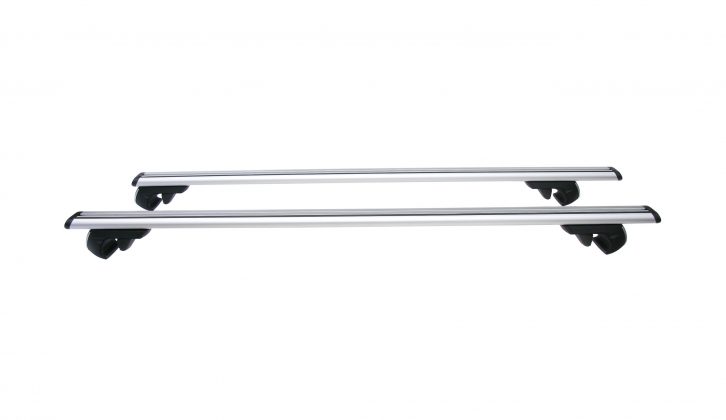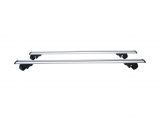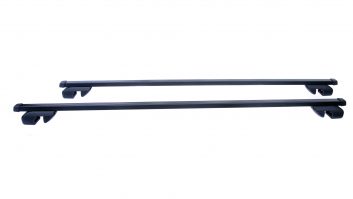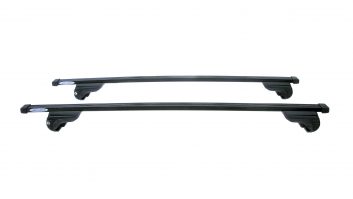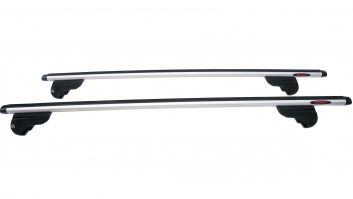Verdict
There is no doubt that the Atera Signo RT is a premium product, with a usefully high maximum loading weight.
Pros
They are easy to fit
The maximum load is 100kg
A T-track for security is standard
Cons
These roof bars are quite wide
When packing for caravan holidays it’s easy to run out of storage space in the caravan itself. Not only that, but nobody wants to risk destabilising the caravan by loading it up with too many heavy items. So it’s terrific that there’s a wide range of roof bars available to fit almost every car.
But with so many rival products on the market, how can you choose the best roof bars for your tow car?
From a distance, they all look pretty much the same, but don’t be fooled. The wind noise, drag, effect on your fuel consumption, load-bearing capacity and fixing methods vary quite a bit.
We’ve found that some roof bars are easy to fit on your own, while others are so fiddly that you’ll need a friend to help you. The vehicle-specific roof bars are generally the easiest to fit, but of course it will be annoying if you change your car and then have to buy new roof bars. The solution is to buy one of the modular roof bar systems, which are designed to fit any car. The catch? Modular systems are harder to fix securely.
At Practical Caravan we’re always looking for car and caravan accessories that offer you the best value for money. So that’s why we’ve been assessing the merits of ten different sets of roof bars, to make sure you buy the best. We have focused mainly on rail-fit bars, and wherever possible we have also tested the same bar fitted with mounts designed to be secured to door apertures.
The latter are more difficult to install on your own, because you really need to tighten each side up little by little, evenly. The way they work is that when you tighten the foot and clamp into one door aperture, it pulls against the foot and clamp on the other side of the car.
Sadly roof bars can be a target for thieves, so we appreciate the sets with added security measures. The safest to buy come with have and T-tracks. These T-tracks are narrow grooves cut into the top of premium bars and you’ll get special bolts to fit into the tracks to secure your load. T-track bolts are easier to fit than U-bolts, because they don’t have to be kept pressed against the bottom of the bar while being pressed from above.
In our group test, all rail-mounted roof bars were ordered for the Volvo V70/850 Estate.
On test here is the Atera Signo RT – and Atera’s premium range of bars is the polar opposite to the standard Signos.
Their advanced aerofoil profiles are said to improve mpg and cut down wind noise – especially if the bars are unloaded. The latter we can certainly vouch for.
The shape obviously makes the bars a little wide, at 85mm, but a T-Track comes as standard to solve any fixing difficulties caused by using overly wide clamps. These are much easier to fit than the basic Signos, too. Simply remove the locked plates, on each foot, to reveal a single adjuster bolt. Not only does this clamp the jaws, it also secures the foot to the bar laterally.
As you’d expect with premium bars like these, the maximum load is 100kg.
A T-Track comes as standard to solve any fixing difficulties caused by using overly wide clamps
Technical Specifications
| Choice of materials in Atera range | Plastic-coated galvanised steel or aluminium |
| Sizes | 32 x 22mm (steel) or 57 x 30mm (aluminium) |
| No extra tools needed | Allen key supplied |
